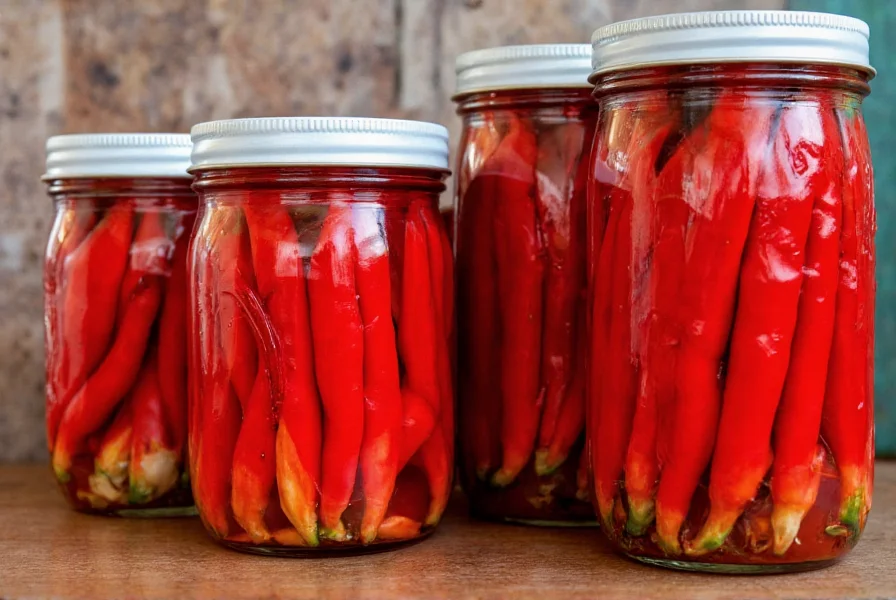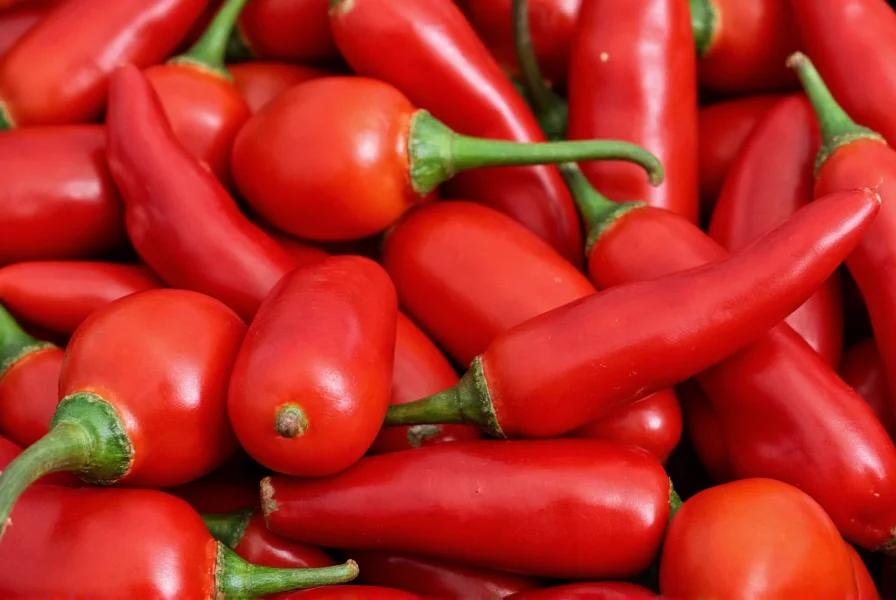When serrano peppers reach full maturity on the plant, they transform from their common green state to a brilliant red hue. This color change signifies more than just visual appeal—it represents a shift in flavor profile and heat intensity that makes red serranos valuable for specific culinary applications. Understanding these mature peppers helps home cooks and chefs maximize their potential in the kitchen.
The Ripening Process: From Green to Red Serrano Chili
Serrano peppers typically start as deep green fruits and gradually transition through light green to yellow, orange, and finally red as they mature. This ripening process takes approximately 2-3 weeks longer than harvesting them green. The extended time on the plant allows sugars to develop, creating a more complex flavor profile.
Unlike some chili varieties that dramatically increase in heat as they ripen, serranos experience a modest heat boost when turning red. While green serranos measure 10,000-16,000 Scoville Heat Units (SHU), their red counterparts reach 15,000-23,000 SHU. This subtle increase makes red serranos noticeably hotter than jalapeños (2,500-8,000 SHU) but milder than cayenne peppers (30,000-50,000 SHU).
| Chili Variety | Scoville Heat Units | Flavor Profile |
|---|---|---|
| Green Serrano | 10,000-16,000 | Grassy, bright, vegetal |
| Red Serrano | 15,000-23,000 | Fruity, floral, slightly sweeter |
| Jalapeño | 2,500-8,000 | Grassy, slightly sweet |
| Cayenne | 30,000-50,000 | Sharp, pungent, earthy |
Flavor Differences: Red Serrano vs Green Serrano
The most significant distinction between red and green serrano chilies lies in their flavor complexity. Red serranos develop subtle fruity and floral notes that complement their characteristic heat, making them particularly suitable for salsas, sauces, and dishes where a more rounded chili flavor is desired.
Chefs often prefer red serranos for raw applications like pico de gallo or fresh guacamole because the mature peppers' sweetness balances their heat better than green serranos. When cooked, red serranos maintain their vibrant color longer than green varieties, adding visual appeal to dishes.

Culinary Applications for Red Serrano Chilies
Red serrano peppers shine in applications where their nuanced flavor can enhance rather than overwhelm. Consider these uses:
- Salsas and fresh preparations: Their bright heat and fruitiness elevate raw salsas without dominating other ingredients
- Vinegar-based hot sauces: The natural sweetness balances vinegar's acidity in fermented hot sauces
- Roasted vegetable dishes: Toss with corn, zucchini, and tomatoes for a spicy side dish
- Marinades: Blend with citrus, garlic, and herbs for chicken or fish
- Infused oils: Create flavorful chili oil for finishing dishes
When substituting red serranos in recipes calling for green serranos, reduce the quantity by 25% to account for the increased heat. For those seeking a red serrano chili substitute, consider a combination of jalapeño and cayenne peppers to approximate both the heat level and flavor complexity.
Selecting and Storing Red Serrano Chilies
Choose firm, glossy peppers with smooth skin and no wrinkles or soft spots. Vibrant red color indicates full ripeness, though some varieties may develop orange or crimson hues. Avoid peppers with dark spots or signs of shriveling.
Store unwashed red serranos in the crisper drawer of your refrigerator for up to three weeks. For longer preservation:
- Freezing: Place whole peppers in airtight bags for up to 6 months (no need to blanch)
- Drying: String peppers and air-dry or use a food dehydrator for versatile dried chilies
- Pickling: Preserve in vinegar with garlic and spices for refrigerator pickles

Handling Safety for Red Serrano Peppers
Despite their smaller size compared to habaneros or ghost peppers, red serranos contain enough capsaicin to cause skin irritation. Always wear gloves when handling multiple peppers, and avoid touching your face. If you experience burning:
- Wash hands thoroughly with soap and cold water
- Apply milk or yogurt to affected skin areas
- Use vegetable oil to break down capsaicin before washing
Remember that cooking doesn't eliminate capsaicin, so handle cooked sauces containing red serranos with care as well.
Frequently Asked Questions
Are red serrano peppers hotter than green serranos?
Yes, red serrano peppers are typically hotter than their green counterparts. As serranos ripen and turn red, their Scoville heat units increase from 10,000-16,000 (green) to 15,000-23,000 (red). The extended time on the plant allows for greater capsaicin development, though the difference is noticeable but not dramatic.
What's the best way to use red serrano chilies in cooking?
Red serrano chilies excel in fresh applications where their fruitier flavor can shine, such as salsas, guacamole, and ceviche. They also work well in vinegar-based hot sauces, roasted vegetable dishes, and as a component in marinades. When substituting for green serranos, use about 25% less due to their increased heat level.
How long does it take for serrano peppers to turn red?
Serrano peppers typically take 2-3 weeks longer to ripen from green to red after reaching their full size. The exact time depends on growing conditions, but most varieties will transition through yellow and orange stages before becoming fully red. Leaving peppers on the plant until they develop deep, uniform color ensures maximum flavor development.
Can I substitute red serrano for jalapeño in recipes?
Yes, but with caution. Red serranos are significantly hotter than jalapeños (15,000-23,000 vs 2,500-8,000 Scoville units). Use approximately one-third the amount of red serrano compared to jalapeño called for in a recipe. For similar heat with comparable flavor, consider using a combination of jalapeño and a small amount of cayenne pepper instead.
Do red serrano chilies have different nutritional benefits than green ones?
Red serrano chilies contain higher levels of certain nutrients compared to green varieties, particularly vitamin C and carotenoids (which give them their red color). As peppers ripen, their vitamin C content increases, and they develop additional antioxidants. Both forms provide capsaicin, which has been studied for potential metabolic and pain-relief benefits.











 浙公网安备
33010002000092号
浙公网安备
33010002000092号 浙B2-20120091-4
浙B2-20120091-4